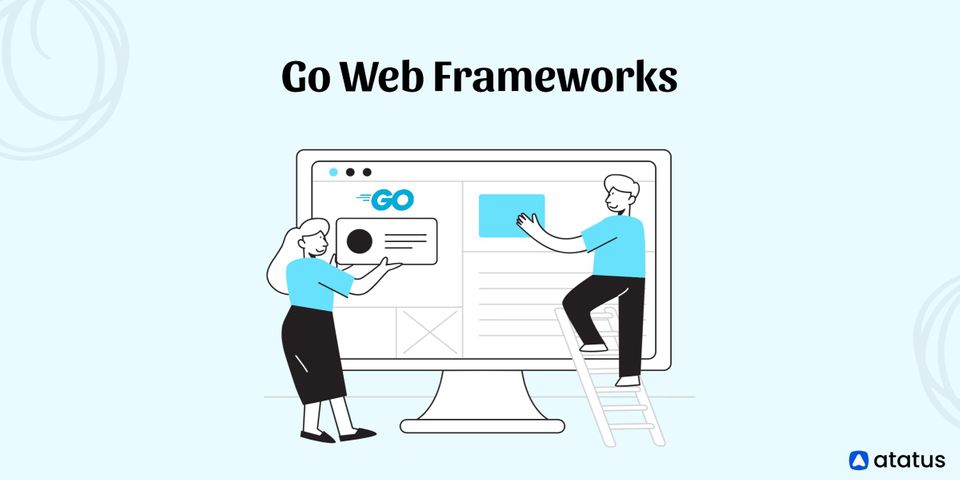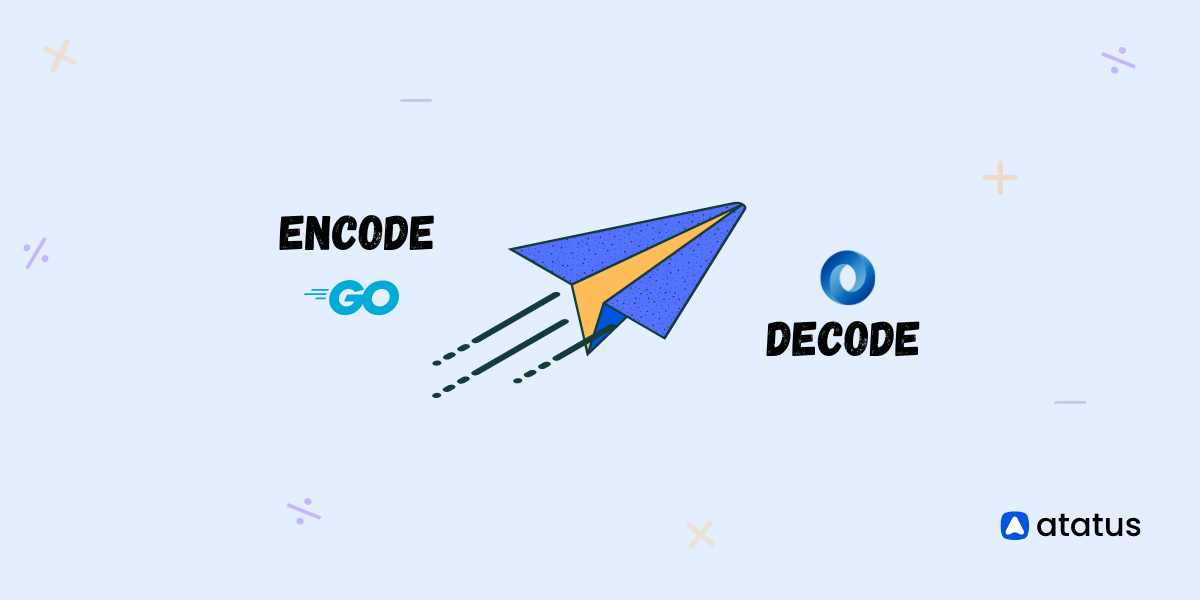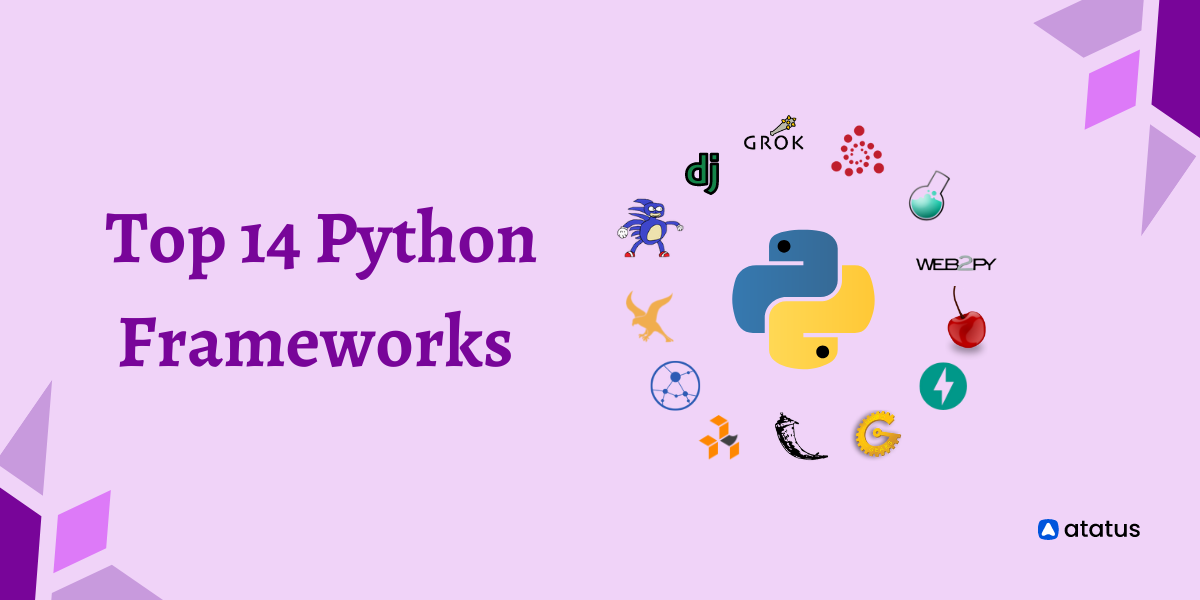12 Best Go Web Frameworks for Development
Golang is a shortened form of the Go programming language. Golang is a reliable and popular alternative for writing APIs and developing web services since its entry into the technological market.
After its introduction, it quickly became one of the best programming languages. In surveys, nearly 90% of all respondents indicated they would move on with Golang. By the way, this is for the upcoming round of projects. Golang has established itself as the best framework among all the web programming languages.
Golang is known for its unique features and can also serve as a superior alternative. Therefore, it can be said that the existing Go language has its full ancestry in the developmental languages C and C++.
The temperament of the Go language is fairly similar to that of practically all applications. It is created almost entirely for concurrency. For all the application development companies out there, Golang is a terrific go-to web framework because it is very practical.
Following is a list of the top 9 web frameworks in Golang ranked by popularity (based on stars on GitHub):
#1 Gin
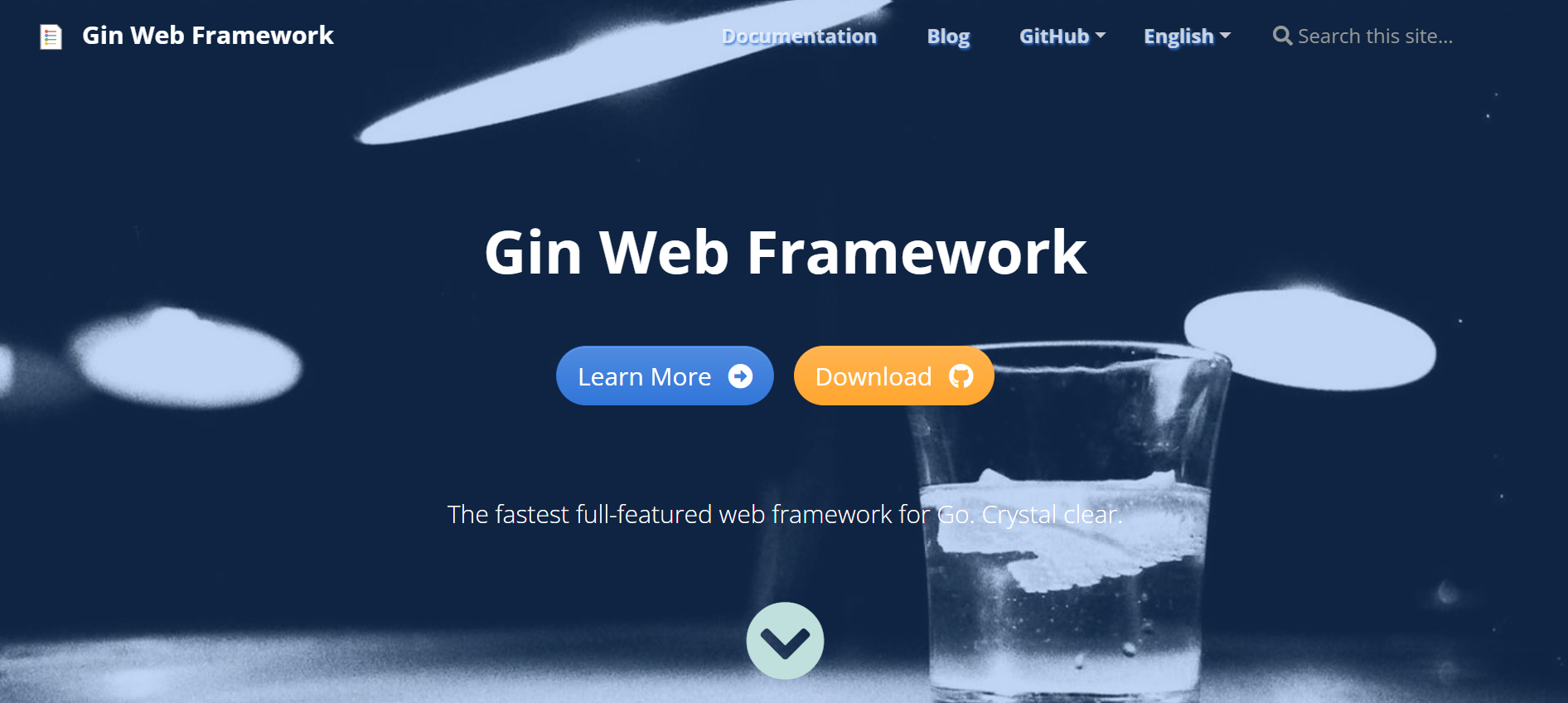
In terms of popularity, the gin framework comes out on top due to its performance and simple design. If a programmer wishes to create a single-page application using a frontend framework, it is typically utilized to establish a REST API for the backend.
With its excellent documentation available on GitHub, this framework is perfect for beginners and uses HTTP routers to handle Golang traffic. It is the best Golang framework for creating high-performance REST APIs since it supports the most crucial libraries and features.
This web framework's API will be comparable to Martini's but nearly 40 times faster. Gin has a large user base that has produced numerous middlewares that have been thoroughly tested and made using gin much simpler and more dependable.
The biggest drawback is that, despite being appropriate for smaller applications, it is not appropriate for the development of large backend applications or complex enterprise-level server services.
Features of gin:
- Martini-like API
- Performs REST APIs
- Uses HTTP router to create applications quickly
#2 Beego
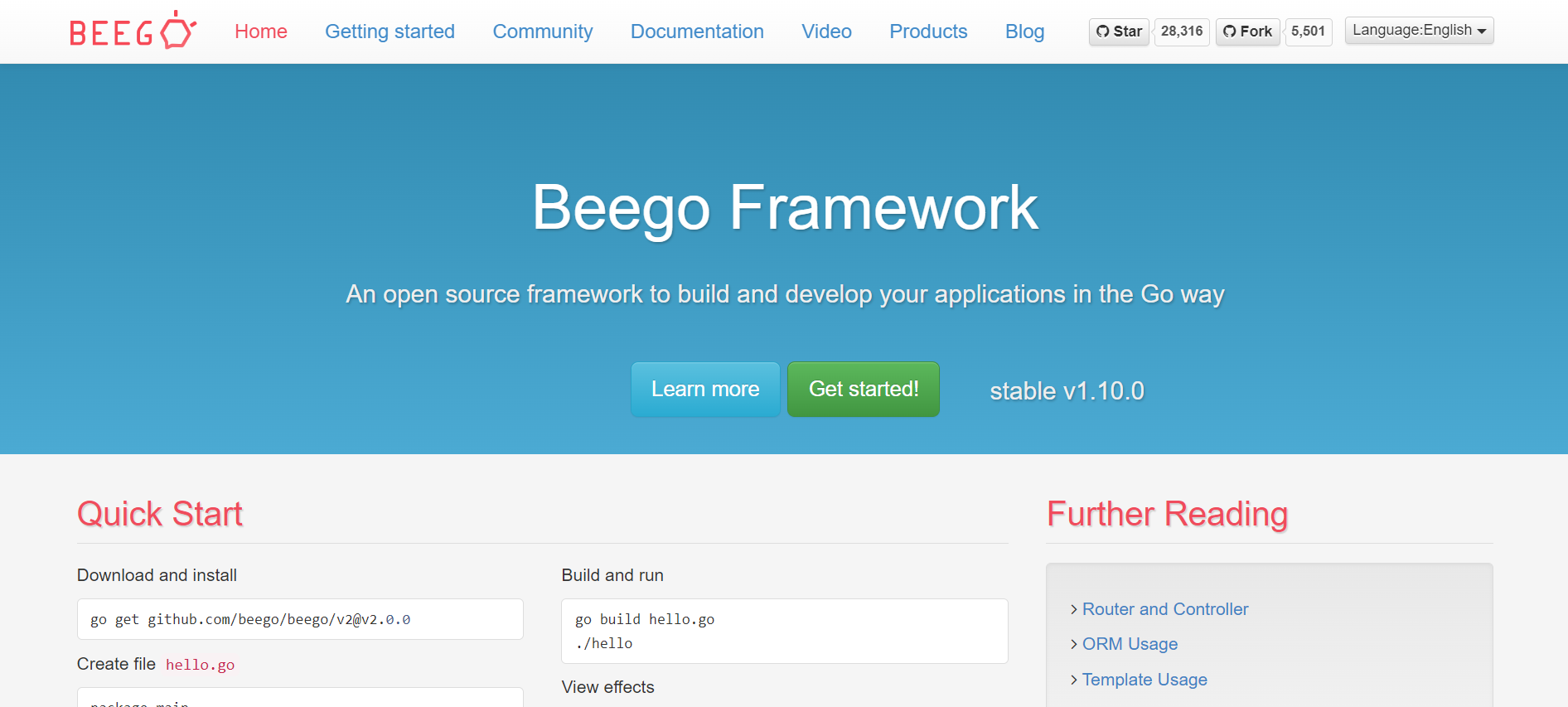
For the quick creation of REST APIs, web applications, and backend services in Golang, the beego framework is utilized. It incorporates particular Golang features like interfaces and struct embedding and is frequently compared to the Python Django web framework.
It doesn't need any installations from third parties. It is a complete Model-View-Controller (MVC) framework with its libraries and a built-in tool, known as the Bee Tool, that helps in locating the code changes.
Additionally, it is broken up into eight modules that can be used or disregarded. It incorporates session management tools, logging systems, and the Object-Relationship Map (ORM), which helps in organizing the application's database.
It also includes libraries for managing HTTP components and a cache handler. Another excellent aspect is that it functions nicely with command-line tools, much like Django does.
Beego's great functionality and wide range of features make them unsuitable for beginners, which is the main drawback.
Features of beego:
- Combines ORM with an integrated cache handler
- No requirement for a third-party library
- Quite Time-saving
- Quick Web Application Development
#3 Kit
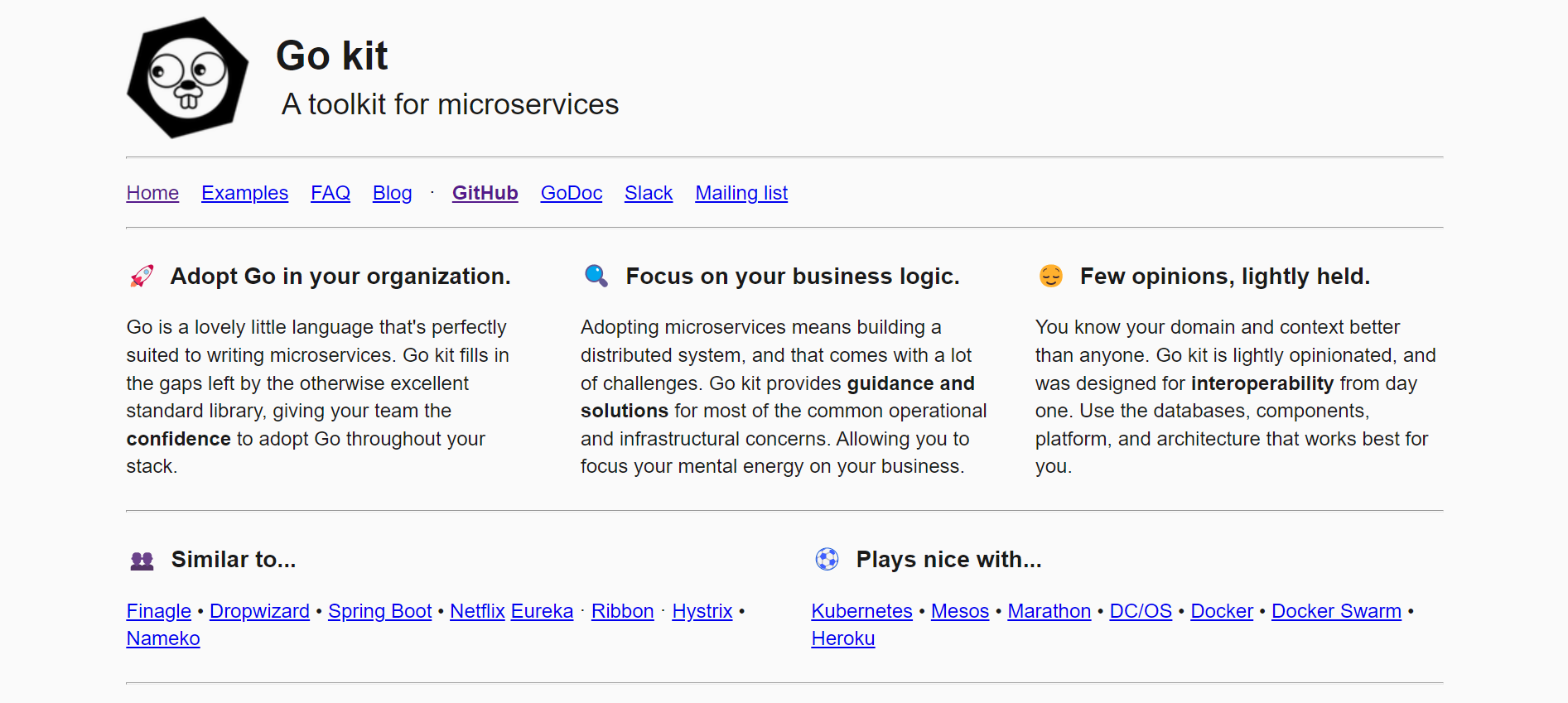
For creating sturdy, dependable, and maintainable microservices in Golang, use the kit framework. For businesses of any size, it is a collection of packages and best practices that offer a thorough, reliable, and trustworthy method of creating microservices.
Go is a fantastic general-purpose language, but microservices need some particular assistance. As a result, the kit architecture offers infrastructure integration, system observability, and Remote Procedure Call (RPC) safety.
Golang is a first-class language for creating microservices in any business because of its composition of numerous closely linked packages that together constitute an opinionated framework for building substantial Service-Oriented Architectures (SOAs).
The developers are free to select the platforms, databases, components, and architectural styles that best suit their needs because the system was meant to be interoperable. The disadvantage of utilizing go-kit is that it has a significant overhead for adding API to the service because of how heavily it relies on interfaces.
Features of kit:
- Operates in a heterogeneous SOA
- Operate within existing infrastructures
- Pluggable serialization and transport
- RPC as the primary messaging pattern
#4 Echo

Another lightweight, high-performance, and adaptable Golang web framework is the echo framework. It has a highly efficient HTTP router that intelligently prioritizes routes and allocates no dynamic memory. It is used to create dependable and expandable REST APIs that are simple to categorize.
It offers HTTP/2 support and automatically installs TLS certificates, improving performance and user experience. Additionally, it has a large number of available built-in middlewares, and developers can even create their middlewares that can be set at the root, group, or route level.
For HTTP request payload, including JSON, XML, or form-data, it provides data binding. It includes an API to deliver JSON, XML, HTML, files, and attachments as HTTP responses for data rendering. Any template engine can be used to render templates, and each template has a unique central HTTP error handling system.
The lack of frequent code updates and the fact that only one developer maintains the echo framework are its drawbacks.
Features of echo:
- Automatic TLS
- Data Binding
- Data Rendering
- Extensibility
- HTTP/2 support
- Middlewares
- Optimized Router
- Scalability
- Templating
#5 Fasthttp
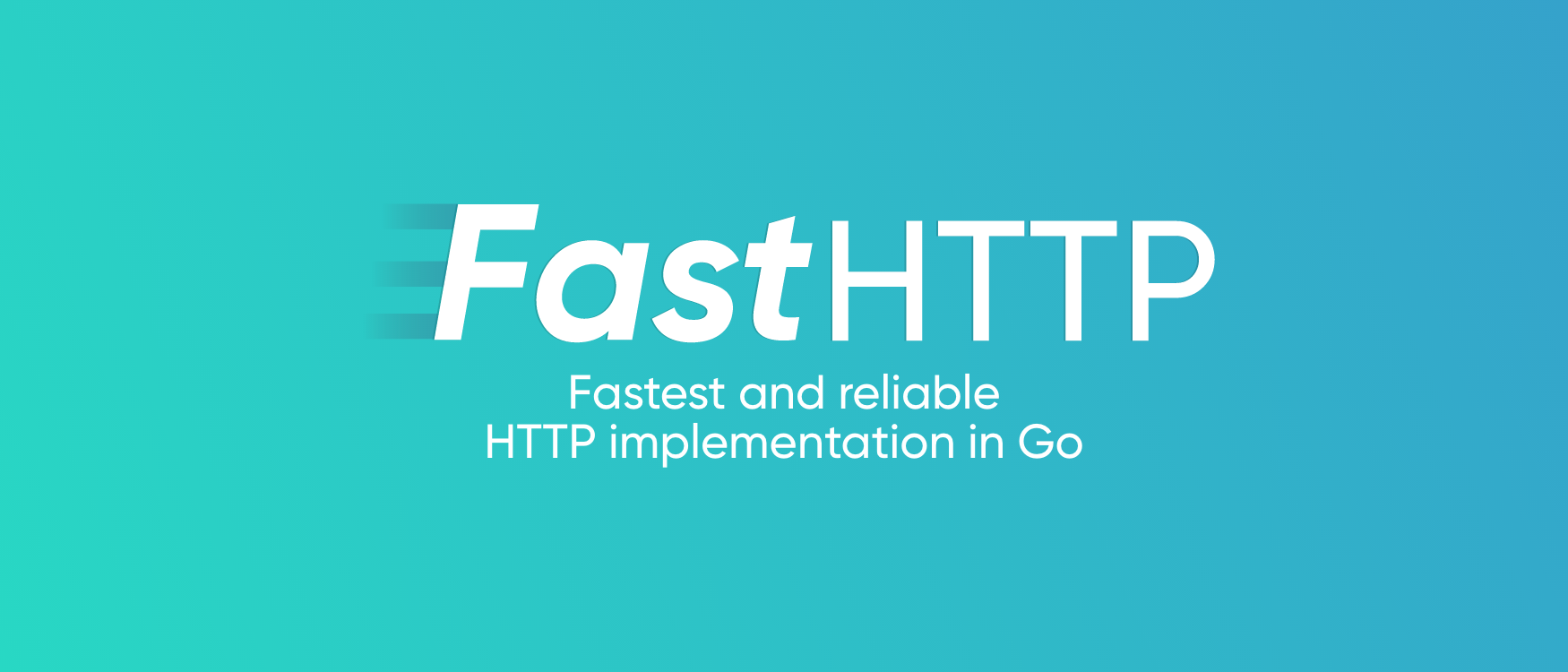
Due to the limitations of net/http in terms of optimization possibilities, the fasthttp framework offers a quick HTTP server and client API. On current hardware, it can easily manage over 100K qps and over 1M concurrent keep-alive connections because of its speed optimization.
For HTTP request payload, including JSON, XML, or form-data, it provides data binding. It includes an API to deliver JSON, XML, HTML, files, and attachments as HTTP responses for data rendering. Any template engine can be used to render templates, and each template has a unique central HTTP error handling system.
The lack of frequent code updates and the fact that only one developer maintains the echo framework are its drawbacks.
Features of fasthttp:
- Extending current client- and server-side implementations
- Optimized for speed
- Optimized for low memory usage
- The server provides many anti-DoS limits
#6 Fiber
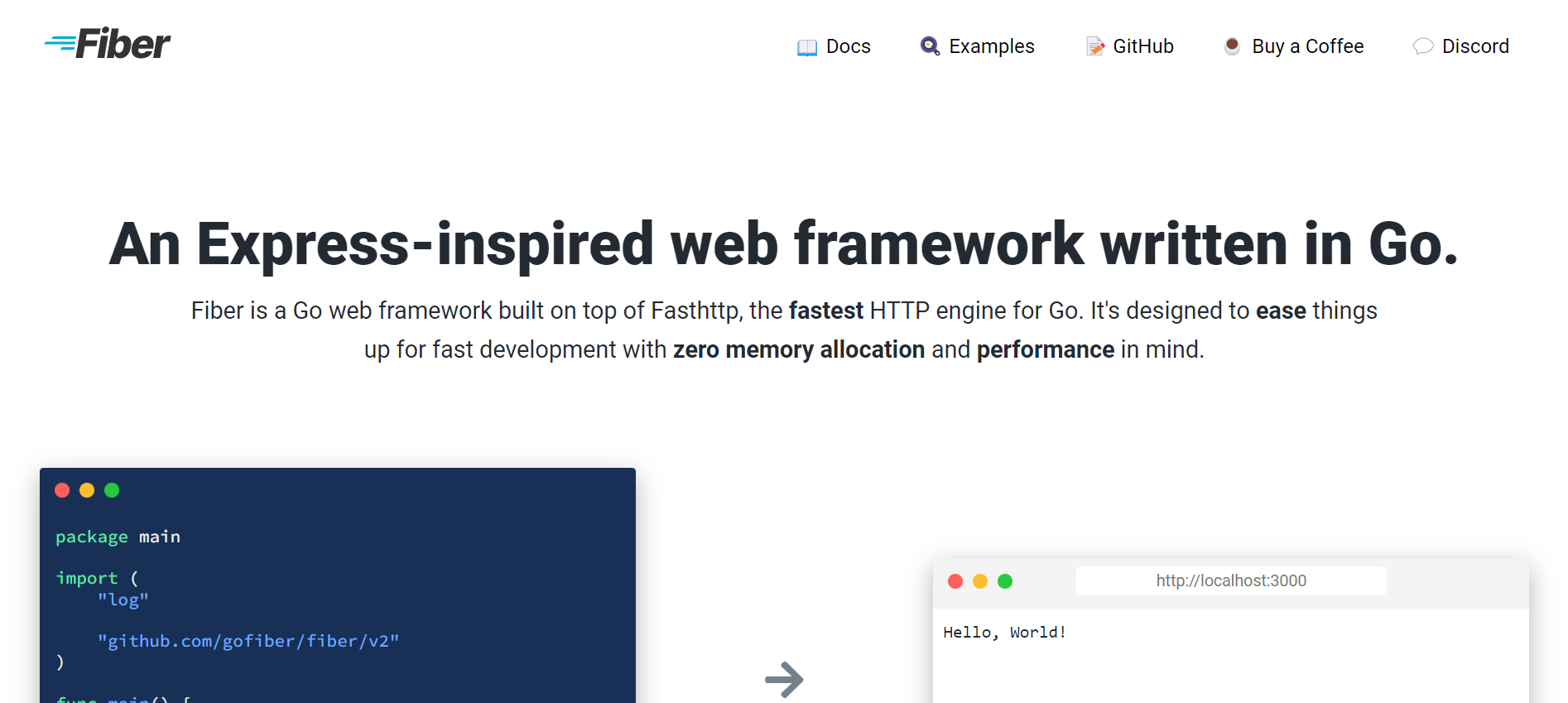
Fasthttp, the quickest HTTP engine for Go, provides the foundation for Fiber, an Express-inspired web framework. Designed with no memory allocation and performance in mind to simplify processes for quick development.
Before they can begin developing their web applications or microservices, new gophers who transition from Node.js to Go face a learning curve. For new gophers to enter the world of Go quickly and with confidence, Fiber was developed as a web framework with the philosophy of minimalism and adheres to the UNIX way.
Express, the most well-liked web framework on the Internet, served as an inspiration for Fiber. We merged Express's simplicity with Go's pure performance.
Many techniques and ideas may look extremely familiar to you if you have ever used Node.js to build a web application (using Express or anything similar). Net/http interfaces are incompatible with fiber. As a result, you won't be able to use any of the net/http ecosystem's projects, including gqlgen, go-swagger, and others.
Features of Fiber:
- API endpoints
- Rapid server-side programming
- Robust routing
- Serve static files
- Template engines
- WebSocket support
#7 Gorilla
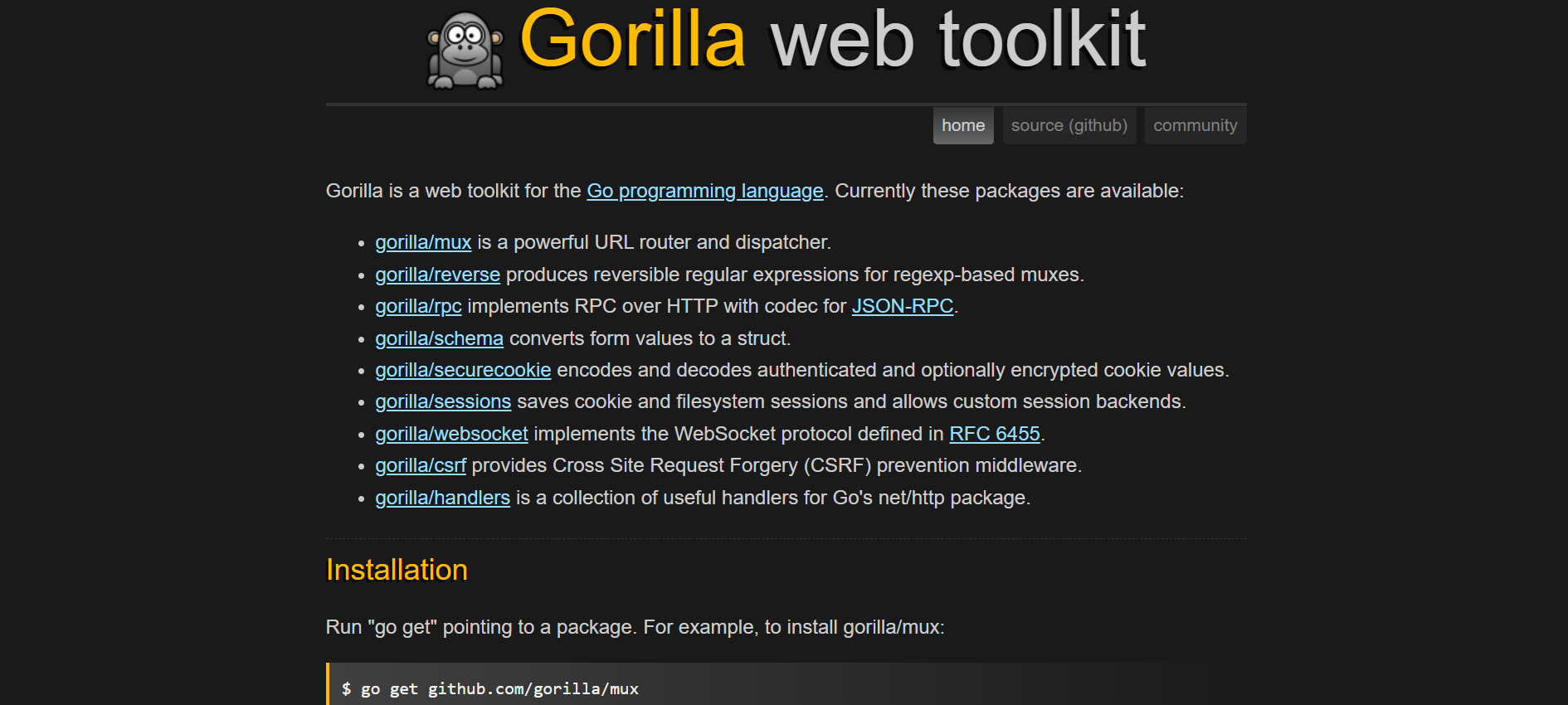
The largest of Google's leading Golang frameworks is called Gorilla. In the world of application development, Gorilla always justifies its titles. Gorilla is the longest web framework that flawlessly supports the overall or reusable components of the http library.
It has the potential to be Golang's most amazing web framework. Modularity and scalability are two of Gorilla's standout features. The issue of putting up with outmoded functionality won't ever arise.
From native support to web sockets, anything can be backed up immediately. This particular architecture has the significant potential to exceed the demands as they stand.
Features of Gorilla:
- Bolster WebSockets
- Efficient in web application development
- Large community
- Minimalistic framework
- Scalability and modularity
#8 Kratos

Kratos is a golang-implemented microservice-oriented governance framework that provides useful features to make it easy for you to create a robust application rapidly from scratch. Kratos offers the tools necessary for large, robust applications and is both powerful and easily accessible.
Kratos increase your productivity. Programmers can eliminate the majority of problems they can run into in the area of distributed systems and software engineering with the help of outstanding resources and additional support, allowing them to concentrate solely on the launch of businesses.
Additionally, Kratos is a perfect instructional resource for all elements of microservices for each programmer to expand their knowledge and abilities.
Features of Kratos:
- Expandability
- Fault-tolerance
- High-performance
- Highly efficient
- Robust
- Simple
#9 Httprouter
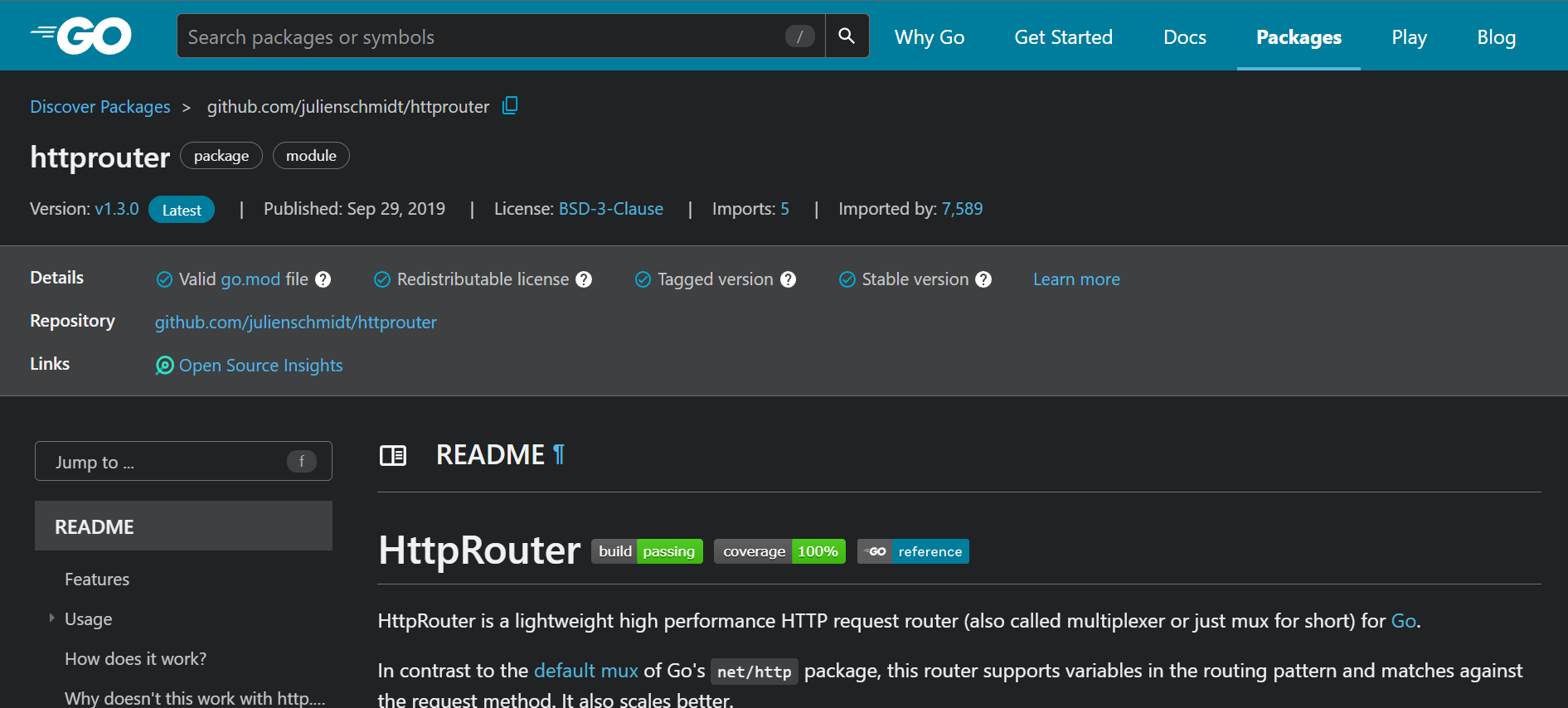
A lightweight, high-performance HTTP request router for Go is named HttpRouter. It is sometimes known as a multiplexer or just a mux.
This router accepts variables in the routing pattern and matches against the request method as opposed to the default mux of Go's net/http package. It scales better as well.
High performance and a minimal memory footprint are priorities for the router's design. Even with incredibly long paths and a lot of routes, it scales nicely. For effective matching, a compressing dynamic trie (radix tree) structure is employed.
Features of Httprouter:
- Only explicit matches
- Path auto-correction
- Parameters in your routing pattern
- Perfect for APIs
- Stop caring about trailing slashes
- Zero Garbage
#10 Revel
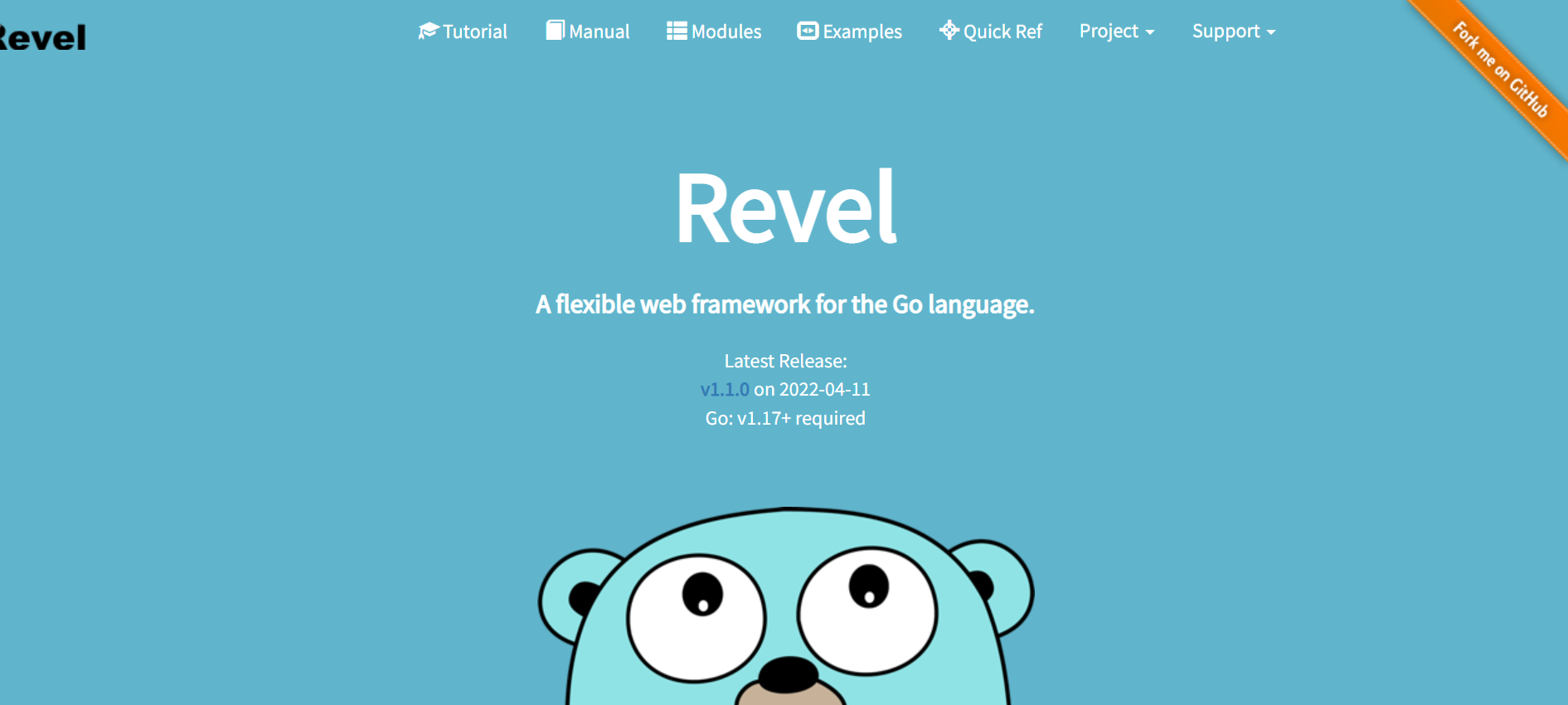
One of the best frameworks on the list consistently is Revel. When it comes to the Golang website's features, this always occurs. One of the most recent Golang frameworks for website developers is Revel.
The same is true for several reasons. Revel always includes a wide variety of pre-configured cutting-edge features and functionalities that are specifically designed for the best possible applications.
The setup and configuration requirements are not necessarily required for the framework. Compared to any other Go language framework, this is unique. This is due to its complete independence. Revel is also totally open to third-party plugins and middleware.
One of Google's Golang's top frameworks is Revel. Revel is the one-stop shop for creating an API, regardless matter how complex the process may be.
Features of Revel:
- Flexible
- Flow Control
- Full-fledged Framework
- Hot Code Reload
- Huge & Active Community
- Migration Friendly
- Reusable MVC
#11 Go-zero
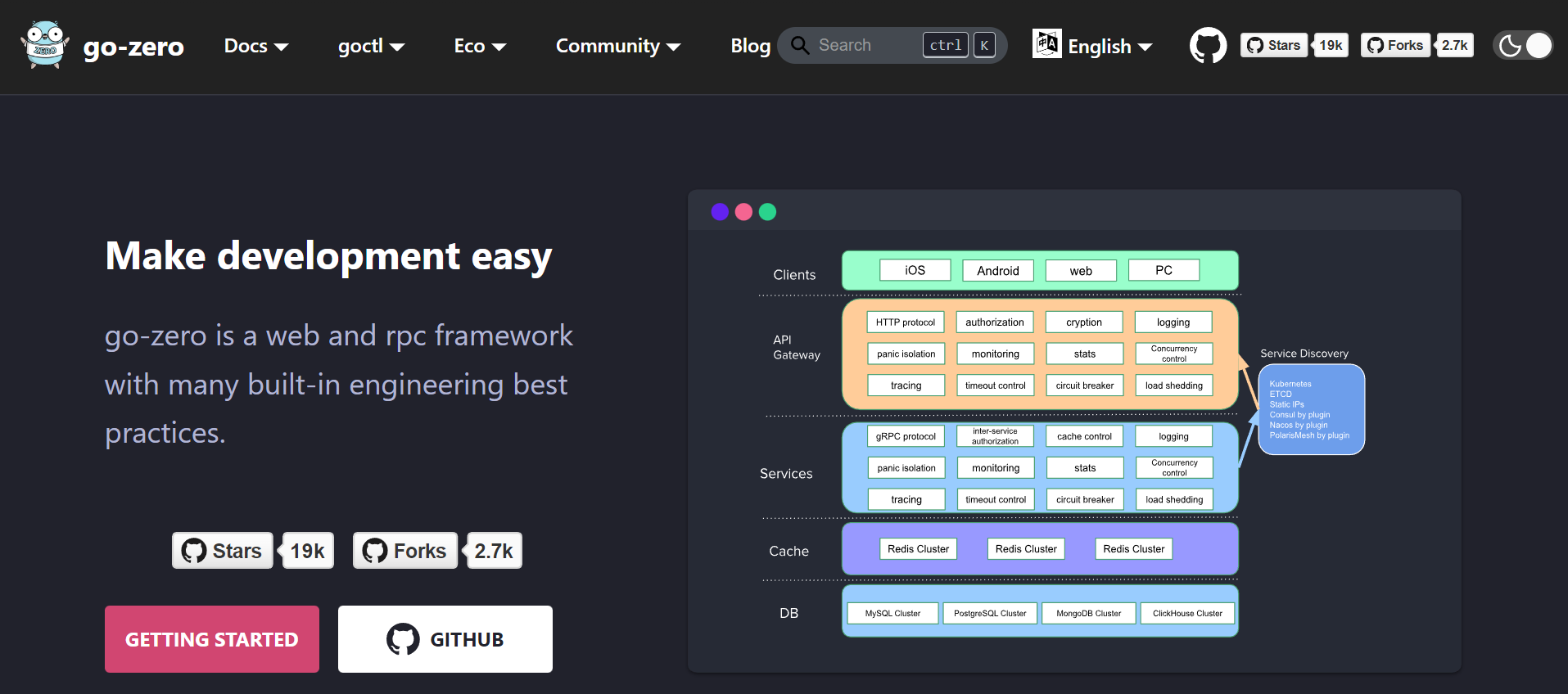
Go-zero is a web and rpc framework with many engineering best practices already included. It was created to ensure the stability of popular services, and it has long been serving sites with tens of millions of users.
Go-zero includes the goctl code generation tool and concise API description syntax. Go, iOS, Android, Kotlin, Dart, TypeScript, and JavaScript may all be generated from .api files with goctl.
It increases the services' stability with tens of millions of daily active users. It has built-in concurrency control, rate limits, adaptive circuit breakers, adaptive load shedding, and timeout controls that do not require configuration.
One command can generate a few distinct languages, and the API syntax is simple. The request parameters from clients are automatically validated.
Features of go-zero:
- Auto management of data caching
- Auto validation of API request parameters
- Chained timeout control
- High performance
- Middlewares are supported
- Simple interfaces
#12 Martini
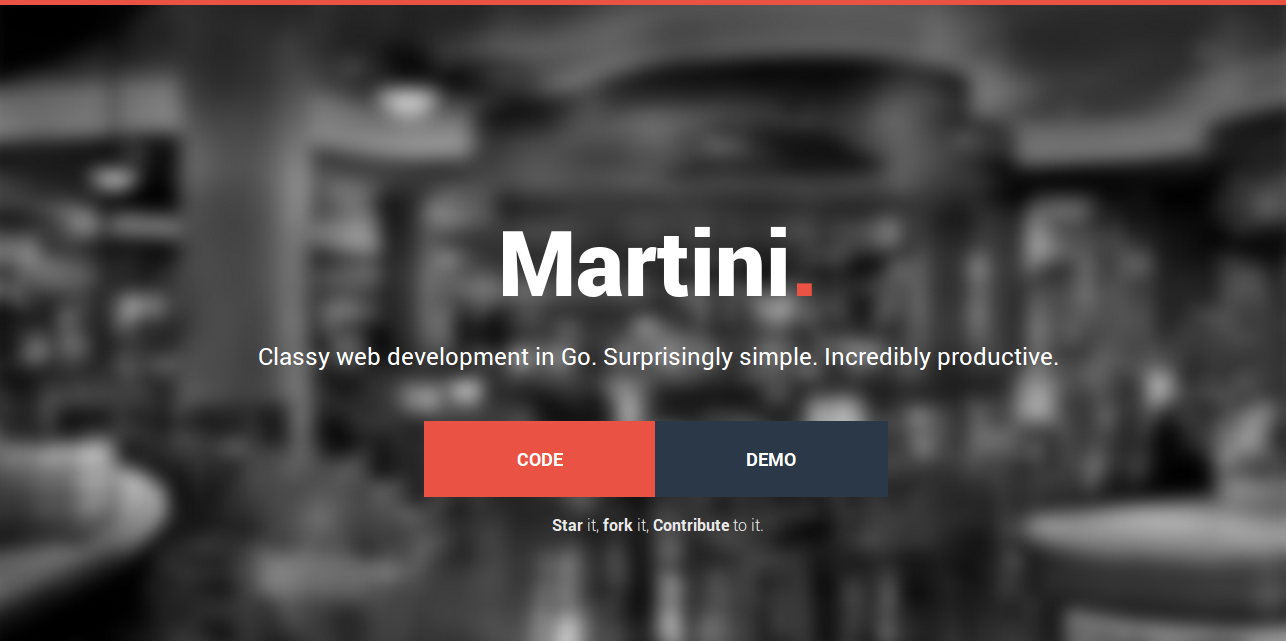
Martini never functions as a framework; it always operates like a precise ecology. As a result, seamless third-party support integration is possible. Martini deserves credit for making the entire thing even lighter.
The website's architecture is quite adaptable. In addition to handling several functions, the framework broadens the abilities. These all have low processing overhead costs. The framework is also designed for developing incredibly powerful website applications as well as Golang services.
Martini has the exceptional capacity to support requirements like routing, handling exceptions, and standard middleware advancement techniques. We all have support for the regex structure, variable arguments, wildcards, and other features.
Features of Martini:
- Include handlers & middlewares
- No installation is required and easily integrated with third parties
- Performs fundamental document routing, exception handling, and serving
- Small, active & updated community
- Supports documentation
Finally!!!
You can use a variety of features and capabilities from each of these frameworks for your next project. They rank among the best Google Go language frameworks for assisting you as you go on with the development of your website or mobile application. Make sure you are familiar with the requirements of the project before selecting the best option from the list.
Golang performs best when working with bytes. Programming languages like C and C++ can be replaced by Golang. We should wait and give the language time to fully flourish since it is still in its infancy and early stages of development.
Monitor Your Go Applications with Atatus
Atatus keeps track of your Go application to give you a complete picture of your clients' end-user experience. You can determine the source of delayed response times, database queries, and other issues by identifying backend performance bottlenecks for each API request.
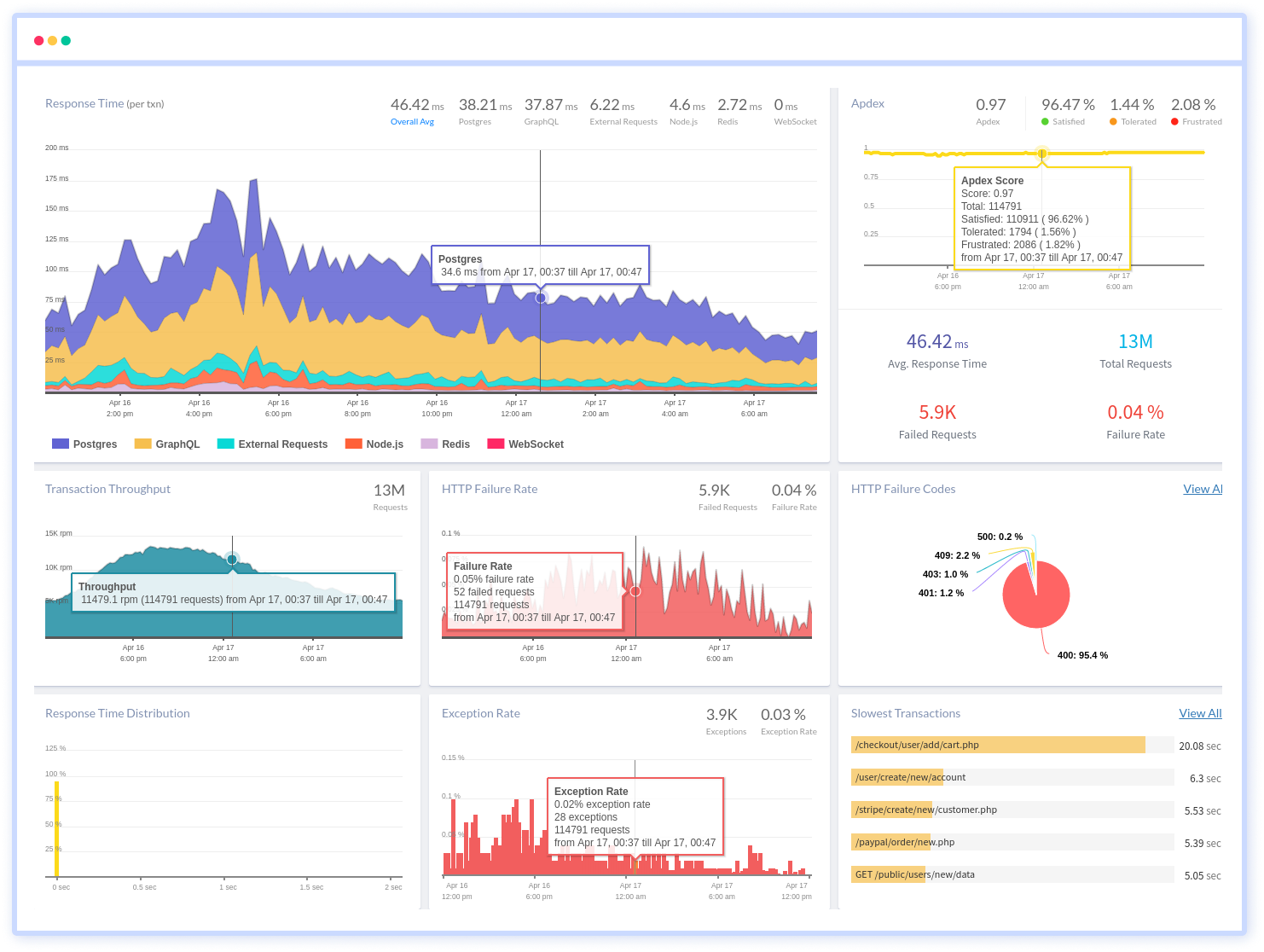
To make bug fixing easier, every Go error is captured with a full stack trace and the specific line of source code marked. To assist you in resolving the Go error, look at the user activities, console logs, and all Go requests that occurred at the moment. Error and exception alerts can be sent by email, Slack, PagerDuty, or webhooks.
#1 Solution for Logs, Traces & Metrics
APM
Kubernetes
Logs
Synthetics
RUM
Serverless
Security
More

